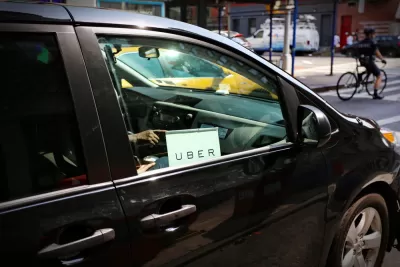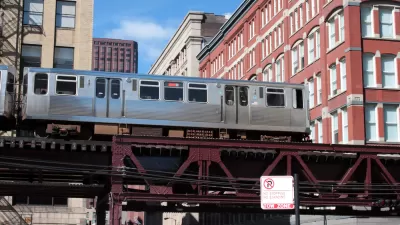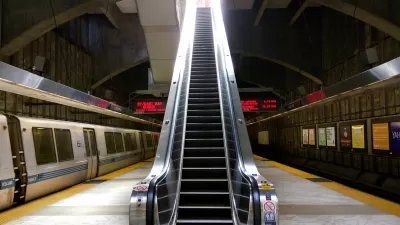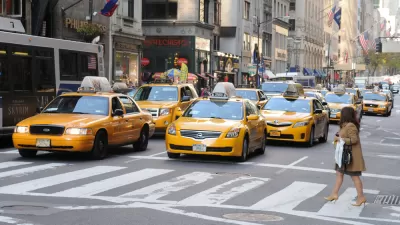Uber and Lyft say they want to improve public transit, but the focus on profit could have serious consequences.

E. Tammy Kim writes about the move by ride-hailing companies into the public transportation sector:
Uber and Lyft have been clear about their intentions. At Uber’s apex of candor, in documents filed with the Securities and Exchange Commission, it identifies a "massive market opportunity" in the estimated 4.4 trillion miles traveled by people on public transit in 175 countries in 2017.
Ride-hailing services can supplement transit and help with the "first mile/last mile problem" of getting riders to and from stations and stops, and the companies see public transit as part of their potential business growth. But the long-term outcomes could pose problems, says Kim.
Uber and Lyft have been seeking out public-private partnerships with transit systems in cities such as Denver. The arrangements have often been advantageous for them because the discounted trips are subsidized by public money and drivers remain independent contractors without public-sector employee protections or benefits.
And the financial motives of Uber and Lyft often do not always align with the goals of transit as a public service. Ride-hailing fares in general are cheaper than they should be, argues Kim, and this siphons off riders from transit while the additional vehicle miles lead to an increase in congestion and pollution.
In addition, notes Kim, Uber and Lyft are not held accountable to the public the way public agencies are. "Nor are they required to serve low-income neighborhoods or cater to the elderly, non-English speakers or people with disabilities."
FULL STORY: How Uber Hopes to Profit From Public Transit

Alabama: Trump Terminates Settlements for Black Communities Harmed By Raw Sewage
Trump deemed the landmark civil rights agreement “illegal DEI and environmental justice policy.”

Planetizen Federal Action Tracker
A weekly monitor of how Trump’s orders and actions are impacting planners and planning in America.

The 120 Year Old Tiny Home Villages That Sheltered San Francisco’s Earthquake Refugees
More than a century ago, San Francisco mobilized to house thousands of residents displaced by the 1906 earthquake. Could their strategy offer a model for the present?

Ken Jennings Launches Transit Web Series
The Jeopardy champ wants you to ride public transit.

BLM To Rescind Public Lands Rule
The change will downgrade conservation, once again putting federal land at risk for mining and other extractive uses.

Indy Neighborhood Group Builds Temporary Multi-Use Path
Community members, aided in part by funding from the city, repurposed a vehicle lane to create a protected bike and pedestrian path for the summer season.
Urban Design for Planners 1: Software Tools
This six-course series explores essential urban design concepts using open source software and equips planners with the tools they need to participate fully in the urban design process.
Planning for Universal Design
Learn the tools for implementing Universal Design in planning regulations.
Clanton & Associates, Inc.
Jessamine County Fiscal Court
Institute for Housing and Urban Development Studies (IHS)
City of Grandview
Harvard GSD Executive Education
Toledo-Lucas County Plan Commissions
Salt Lake City
NYU Wagner Graduate School of Public Service





























